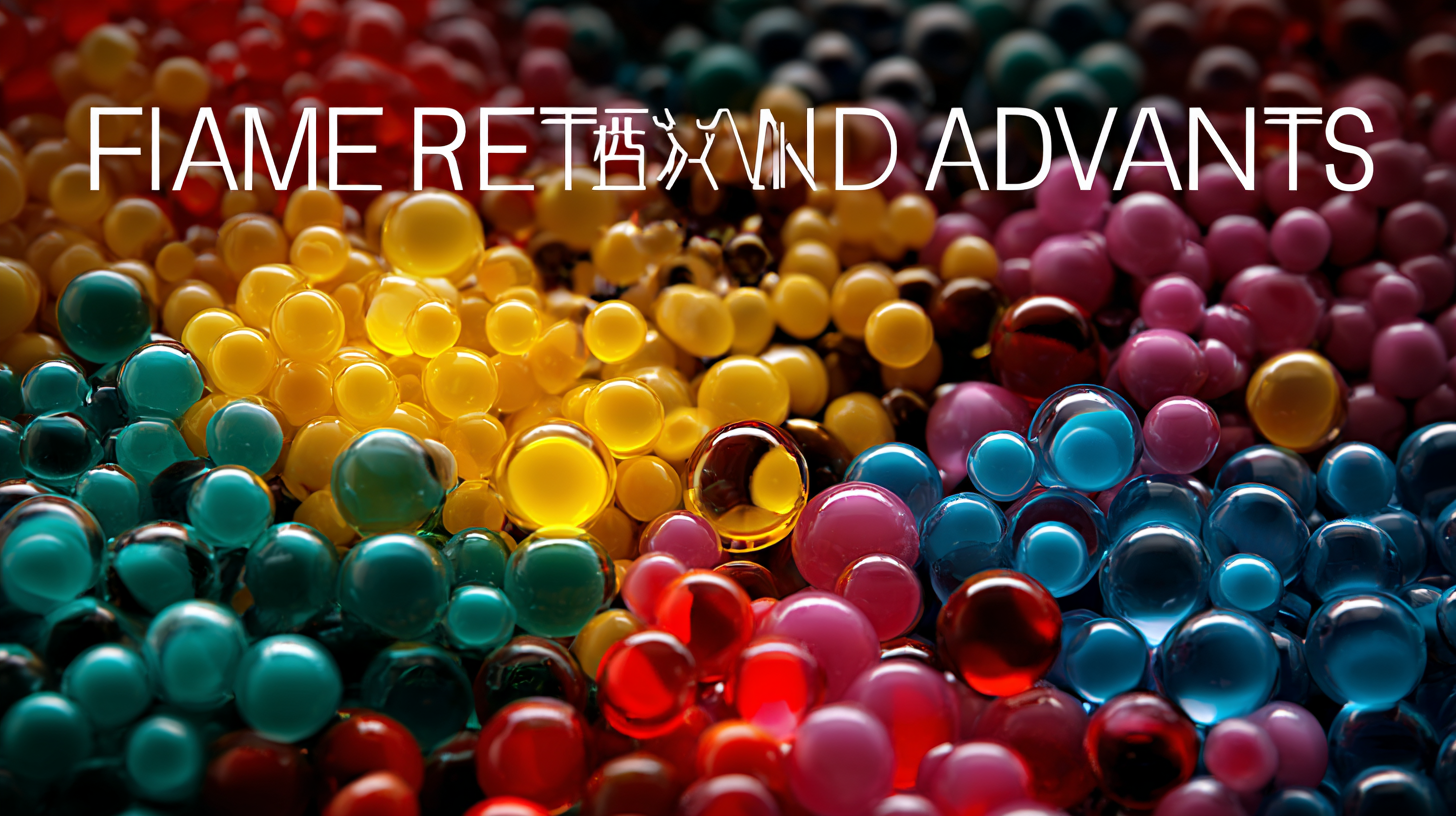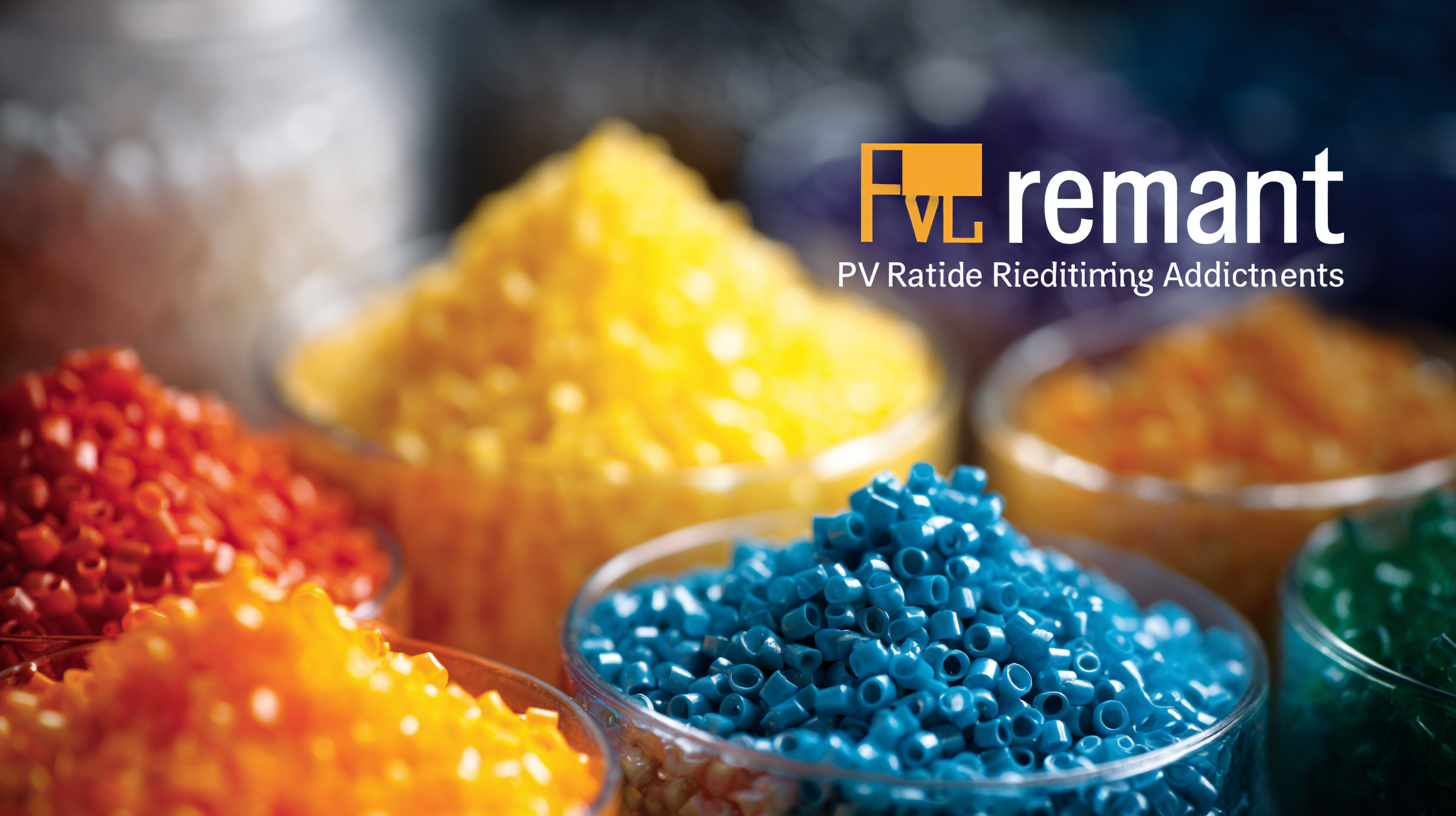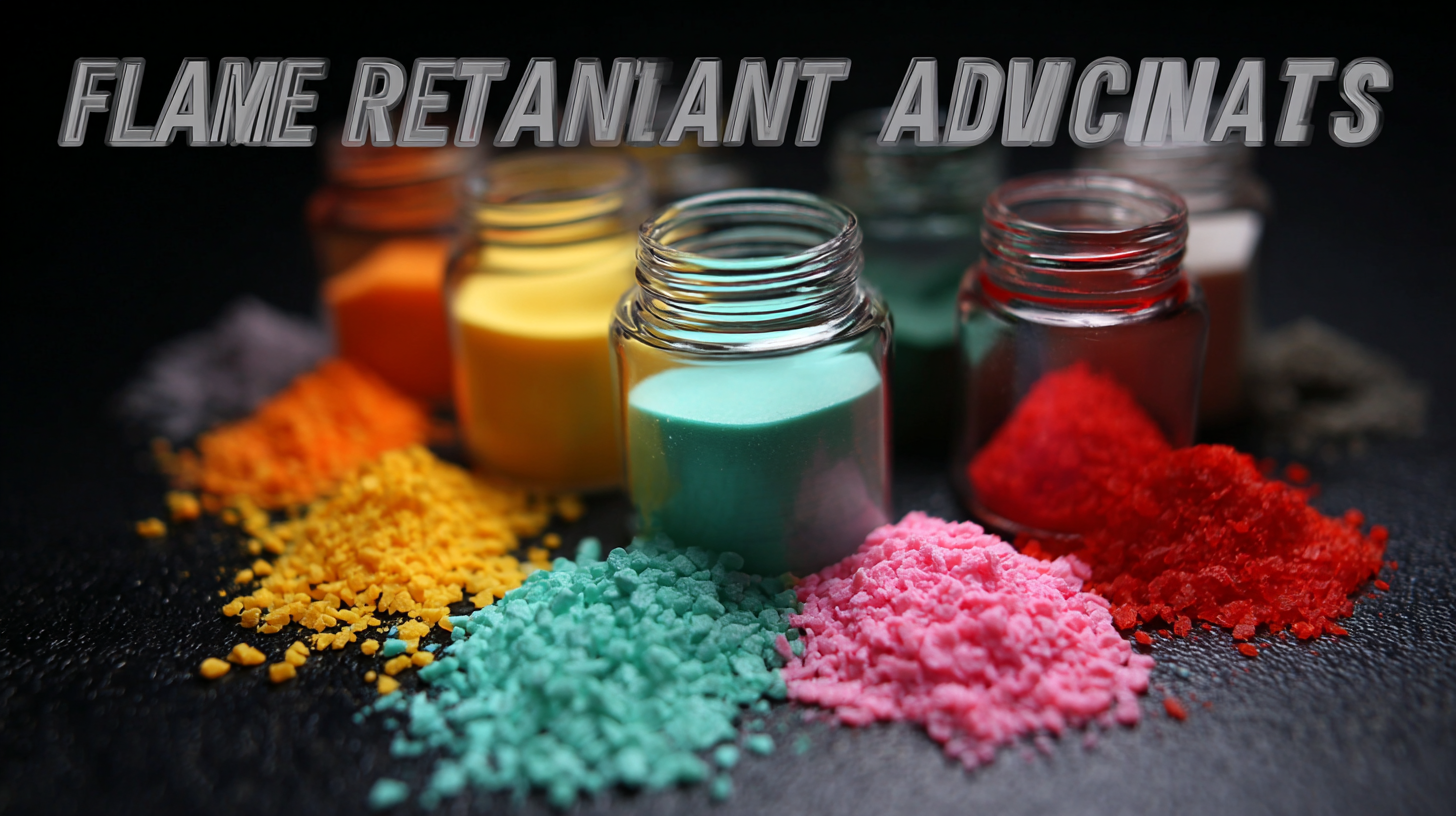
Exploring Varieties of Flame Retardant Additives for PVC Applications and Their Unique Benefits
In the ever-evolving world of polymer science, the search for effective and sustainable solutions is crucial, especially when it comes to flame retardant additives for PVC applications. As concerns over fire safety and environmental impact grow, alternative flame retardant additives are gaining prominence. These alternatives not only enhance the fire resistance of PVC but also cater to a range of performance and environmental standards. This blog delves into the diverse varieties of flame retardant additives for PVC, examining their unique benefits, including improved durability, compliance with regulations, and reduced hazardous emissions. By exploring these alternatives, we aim to provide valuable insights into how the PVC industry can adopt safer and environmentally friendly practices while maintaining the essential properties of this versatile material.

Understanding the Role of Flame Retardants in PVC Applications
Flame retardants play a crucial role in enhancing the safety of polyvinyl chloride (PVC) applications, which are prevalent in various industries due to their versatility and cost-effectiveness. These chemicals are specifically designed to inhibit ignition or slow down the spread of fire in materials that are typically prone to combustion. The incorporation of flame retardant additives into PVC not only improves fire safety but also contributes to the compliance of products with strict regulatory standards.
Recent advancements in flame retardant additives, such as boron compounds, have emerged as promising alternatives due to their low toxicity and diverse molecular structures. Their potential in PVC applications is significant, offering an effective solution for fire resistance without compromising environmental safety. Furthermore, the incorporation of innovative phosphorus-based flame retardants demonstrates efficient performance in PVC, underscoring the continued evolution of these additives. As the PVC additives market is projected to grow substantially in the coming years, understanding the unique benefits and mechanisms of these flame retardants becomes increasingly important for manufacturers and consumers alike.
Key Types of Flame Retardant Additives for PVC and Their Functions
When it comes to enhancing the safety of PVC applications, flame retardant additives play a crucial role. Among the most commonly utilized types are halogenated, non-halogenated, and metal hydroxides. Halogenated flame retardants, such as brominated and chlorinated compounds, effectively disrupt the combustion process by forming a protective layer on the material's surface, thereby preventing flames from spreading. Their efficiency has made them popular in industries requiring stringent fire safety standards, although concerns over environmental impact have spurred the development of alternative additives.
Non-halogenated flame retardants, including phosphorous-based compounds, provide an eco-friendly alternative without sacrificing performance. These additives work by promoting char formation during combustion, thus creating a barrier that protects the underlying material. This category is increasingly favored due to rising regulatory pressures and consumer awareness regarding sustainability. Additionally, metal hydroxides, like aluminum and magnesium hydroxide, act by absorbing heat and releasing water vapor, effectively cooling the material during a fire. This not only enhances the fire resistance of PVC but also contributes to a reduction in smoke emission, making them ideal for applications in public spaces where safety is paramount.
Exploring Varieties of Flame Retardant Additives for PVC Applications
This chart illustrates the various types of flame retardant additives used in PVC applications, highlighting their effectiveness and unique benefits.
Evaluating Performance: How Flame Retardants Enhance PVC Safety
Flame retardants play a crucial role in enhancing the safety of PVC applications, offering peace of mind in various industries. These additives function by interrupting the combustion process, lowering flammability, and preventing the spread of fire. Different types of flame retardants, such as halogenated, phosphorus-based, and inorganic compounds, each possess unique mechanisms that cater to specific performance requirements. For instance, halogenated flame retardants effectively form a protective char layer when exposed to flames, while phosphorus-based alternatives act to modify the material’s heat release properties, making them suitable for high-temperature environments.
The application of flame retardants in PVC not only meets regulatory safety standards but also provides additional benefits, such as improved durability and performance in harsh conditions. For example, the integration of flame retardants can enhance the long-term stability of PVC products, reducing the risk of premature degradation and ensuring consistent performance throughout their lifespan. As industries increasingly prioritize safety, investing in advanced flame retardant technologies will remain essential for future PVC applications, ensuring that they meet the evolving demands of safety regulations and customer expectations.

Unique Benefits of Flame Retardants in Global PVC Markets
Flame retardants play a crucial role in enhancing the safety and performance of polyvinyl chloride (PVC) products in various applications, from construction to automotive. According to a report by MarketsandMarkets, the global flame retardants market for PVC is projected to reach USD 7.5 billion by 2025, growing at a compound annual growth rate (CAGR) of 5.6% from 2020. This growth is largely driven by stringent regulations on fire safety and an increasing awareness of fire hazards, which compel manufacturers to incorporate effective flame retardant additives into PVC formulations.
Unique benefits of flame retardants extend beyond compliance with safety standards. For instance, the incorporation of halogenated flame retardants can significantly reduce the flammability of PVC, enhancing its ability to withstand high temperatures and preventing the spread of flames. Additionally, non-halogenated alternatives, which are gaining popularity, are known for their lower environmental impact while still providing high-performance fire protection. According to a study published in the Journal of Fire Sciences, non-halogenated flame retardants not only meet safety regulations but also improve the material's resistance to thermal degradation, thus extending the longevity and durability of PVC products in a variety of demanding environments.
Sustainability and Innovation in Flame Retardant Development for PVC
 The development of flame retardant additives for PVC applications is increasingly driven by the need for sustainability and innovation. Traditional flame retardants often posed environmental and health concerns, leading researchers and manufacturers to explore more eco-friendly alternatives. Innovative approaches are now focusing on bio-based flame retardants, which not only enhance the performance of PVC but also minimize the ecological footprint. These advancements are essential as industries strive to comply with stricter regulations and consumer expectations regarding environmentally responsible products.
The development of flame retardant additives for PVC applications is increasingly driven by the need for sustainability and innovation. Traditional flame retardants often posed environmental and health concerns, leading researchers and manufacturers to explore more eco-friendly alternatives. Innovative approaches are now focusing on bio-based flame retardants, which not only enhance the performance of PVC but also minimize the ecological footprint. These advancements are essential as industries strive to comply with stricter regulations and consumer expectations regarding environmentally responsible products.
Moreover, the integration of sustainable flame retardants into PVC not only ensures safety and compliance but also opens up new avenues for innovation in material design. Novel additives are being tailored to enhance the thermal stability and mechanical properties of PVC, ensuring that the end products do not compromise on quality or durability. This dual focus on safety and sustainability is reshaping the landscape of PVC applications, encouraging manufacturers to rethink their strategies and adopt materials that foster a greener future without sacrificing performance.

